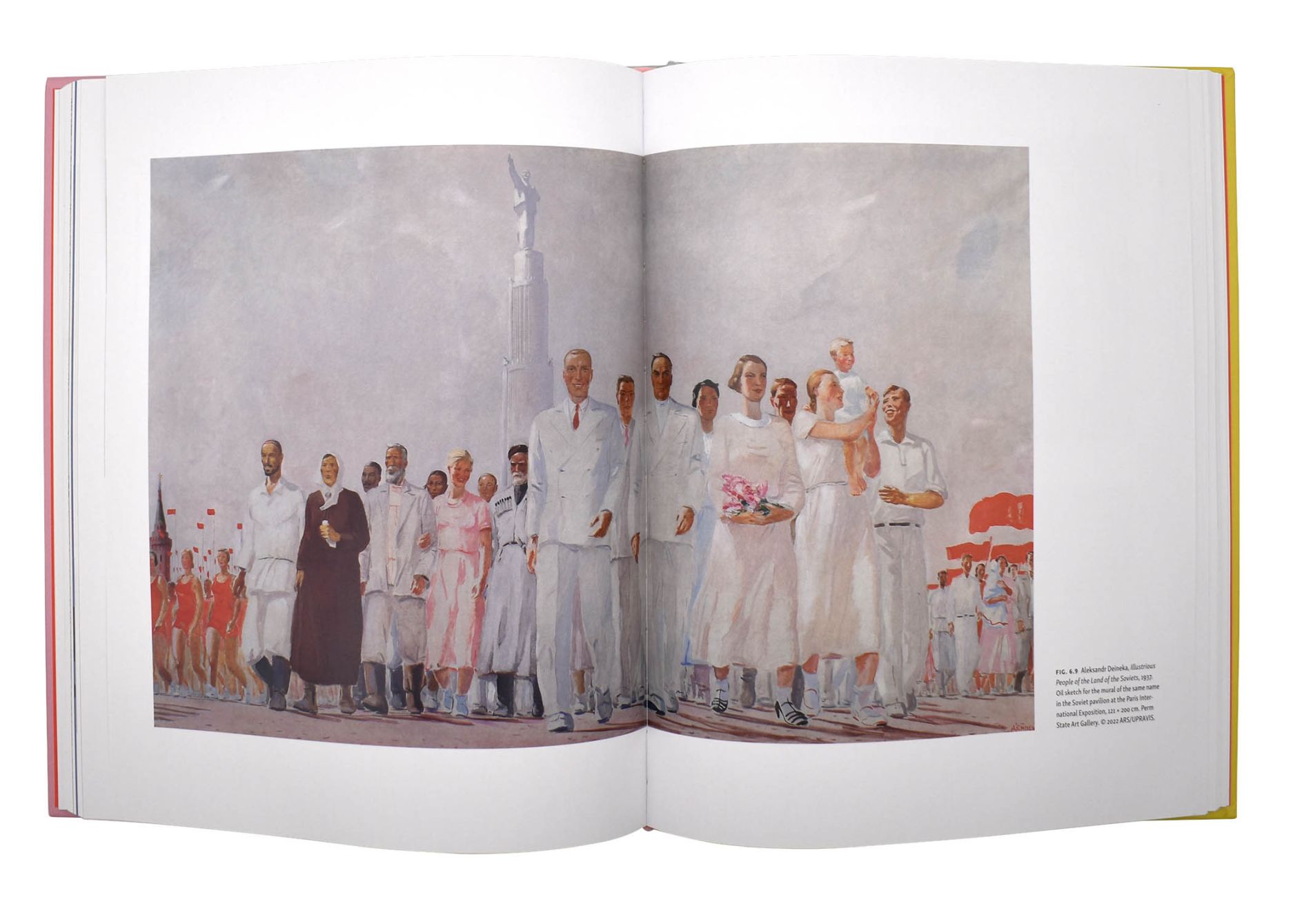Collective Body
Aleksandr Deineka at the Limit of Socialist Realism
A study of the Socialist Realist aesthetic focusing on the artist Aleksandr Deineka.
Dislodging the avant-garde from its central position in the narrative of Soviet art, Collective Body presents painter Aleksandr Deineka’s haptic and corporeal version of Socialist Realist figuration as an alternate experimental aesthetic that, at its best, activates and organizes affective forces for collective ends. Christina Kiaer traces Deineka’s path from his avant-garde origins as the inventor of the proletarian body in illustrations for mass magazines after the revolution through his success as a state-sponsored painter of monumental, lyrical canvases during the Terror and beyond. In so doing, she demonstrates that Socialist Realism is best understood not as a totalitarian style but as a fiercely collective art system that organized art outside the market and formed part of the legacy of the revolutionary modernisms of the 1920s. Collective Body accounts for the way the art of the October Revolution continues to capture viewers’ imaginations by evoking the elation of collectivity, making viewers not just comprehend but truly feel socialism, and retaining the potential to inform our own art-into-life experiments within contemporary political art. Deineka figures in this study not as a singular master, in the spirit of a traditional monograph, but as a limit case of the system he inhabited and helped to create.
Dislodging the avant-garde from its central position in the narrative of Soviet art, Collective Body presents painter Aleksandr Deineka’s haptic and corporeal version of Socialist Realist figuration as an alternate experimental aesthetic that, at its best, activates and organizes affective forces for collective ends. Christina Kiaer traces Deineka’s path from his avant-garde origins as the inventor of the proletarian body in illustrations for mass magazines after the revolution through his success as a state-sponsored painter of monumental, lyrical canvases during the Terror and beyond. In so doing, she demonstrates that Socialist Realism is best understood not as a totalitarian style but as a fiercely collective art system that organized art outside the market and formed part of the legacy of the revolutionary modernisms of the 1920s. Collective Body accounts for the way the art of the October Revolution continues to capture viewers’ imaginations by evoking the elation of collectivity, making viewers not just comprehend but truly feel socialism, and retaining the potential to inform our own art-into-life experiments within contemporary political art. Deineka figures in this study not as a singular master, in the spirit of a traditional monograph, but as a limit case of the system he inhabited and helped to create.
360 pages | 84 color plates, 71 halftones | 8 1/2 x 11 | © 2024
Reviews
Table of Contents
Preface
Introduction
1. The Proletarian Body
2. The Grand Style of Socialist Painting
3. The Lateral Aesthetics of Cultural Revolution
4. Lyrical Socialist Realism
5. American Pictures
6. Primal Scenes of Socialist Realism
7. Afterword: The Soviet Picasso
Appendix: “The Art of Our Days”
Acknowledgments
Notes
Bibliography
Index
Introduction
1. The Proletarian Body
2. The Grand Style of Socialist Painting
3. The Lateral Aesthetics of Cultural Revolution
4. Lyrical Socialist Realism
5. American Pictures
6. Primal Scenes of Socialist Realism
7. Afterword: The Soviet Picasso
Appendix: “The Art of Our Days”
Acknowledgments
Notes
Bibliography
Index





